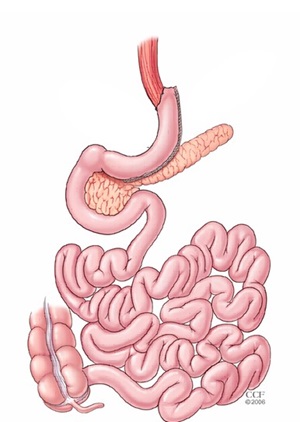The Sleeve is a laparoscopic or minimally invasive procedure. The surgeon works with instruments and a camera inserted through small incisions in the abdomen.
 Sleeve: How Does It Work?
Sleeve: How Does It Work?
The procedure removes about 3/4 of the stomach and restricts the volume of food you can eat. The remaining stomach is the size and shape of a banana. By removing a large portion of the stomach that produces the “hunger hormone”, it decreases hunger, increases fullness, and has an effect on metabolism.
Sleeve: What Are the Advantages?
- Simple procedure with shorter surgery time
- May be used as bridge to another weight loss surgery
- Average percent excess weight loss is 40-50%
Sleeve: What Are the Disadvantages?
- Not reversible
- May worsen or cause reflux/heartburn
- Less impact on metabolism compared to Roux-en-Y, DS, and SADI-S
